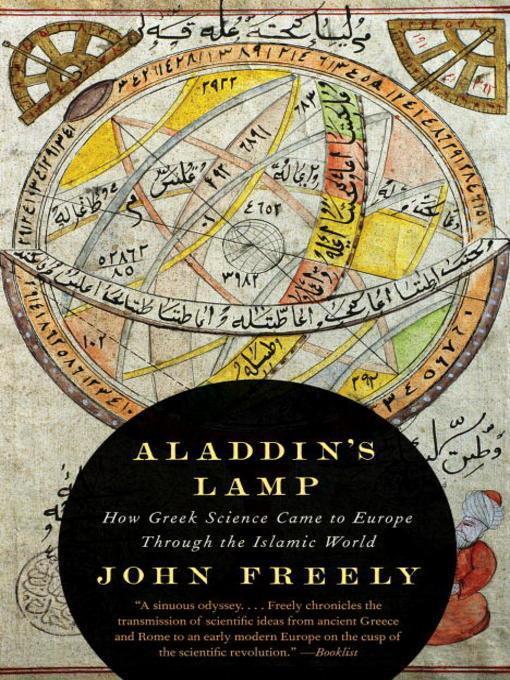
Aladdin's Lamp
How Greek Science Came to Europe Through the Islamic World
کتاب های مرتبط
- اطلاعات
- نقد و بررسی
- دیدگاه کاربران
نقد و بررسی

December 8, 2008
Europe's debt to Islamic scholarship is counted up in this sketchy intellectual history. Freely (Strolling Through Athens
), a historian of science, surveys the work of ancient Greek thinkers from Pythagoras through Aristotle and Ptolemy in astronomy, mathematics, physics and medicine. He then recounts how this learning, mostly forgotten in Western Europe during the Dark Ages, was preserved in medieval Islamic capitals, where Arabic translations of Greek scientific texts sparked an intellectual renaissance. Freely contends that Muslim scientists made important advances, but his case falls short with his shallow treatment of their work—little more than a compendium of names, dates and translations. The book deepens when it analyzes the impact on European scientists, from the 11th century onward, of Latin translations of Greco-Arabic scientific texts. Ranging from 13th-century Oxford and the University of Paris to the Newtonian revolution, Freely shows how Western science developed in relation to—and in controversy with—ancient Greek ideas about matter, light, motion and the structure of the heavens. His map of the route from ancient to modern science is informative and intriguing, but it's more of a chronology than a narrative of intellectual history. 33 illus, maps.

February 15, 2009
Isaac Newton characterized his scientific discoveries as dependent upon his "standing on the shoulder of Giants." In this history of Newton's "Giants," Freely (history of science, Bosphorus Univ.; "Istanbul: The Imperial City") writes, often with encyclopedic detail, about the Greek and Roman natural philosophers and how their observations and philosophical musings influenced Islamic science during the Middle Ages. In return, Islamic scientists built upon this ancient foundation, while concurrently preserving it by translation into Arabic works. By the late Middle Ages, Greek and Islamic science had infiltrated Western thought, fueling change during the Renaissance and blossoming into the Scientific Revolution of the 17th century. Freely is at his best in the later chapters when he moves from a textbook-like description of historical facts to a summary synthesis of the transmission of science from its ancient origins to the beginnings of the modern world. Recommended for academic and large public libraries.Scott Vieira, Johnson Cty. Lib., KS
Copyright 2009 Library Journal, LLC Used with permission.

February 1, 2009
A historian of science, Freely chronicles the transmission of scientific ideas from ancient Greece and Rome to an early modern Europe on the cusp of the scientific revolution. Many ancients notions about nature were, Freely recounts, preserved from oblivion by scholars based in centers of Islamic learning such as Baghdad, Cairo, and Cordoba. Before reaching those destinations, Freelyprofiles the Greek sages, enumerating their surviving works and what information they held about mathematics, astronomy, and medicine, among other subjects. Leaving behind a roster of names that is likely familiar to the core audience, Freelys account then addresses Islamic rulers, such as the first caliphs of the Abbasid dynasty around 800, who sponsored translations into Arabic of Greek texts. Freely ranges over the names of Islamic scholars so occupied, who served as arks for Greek science, and of original thinkers who formulated such topics as algebra, all of which reached the West in the cultural diffusion Freely describes. A sinuous odyssey through scientific ideas, Freelys work will most appeal to tastes for intellectual history.(Reprinted with permission of Booklist, copyright 2009, American Library Association.)

























دیدگاه کاربران